Talking to Carol’s Producers About Their 11-Year Labor of Love
The most lusciously romantic film of the year is Carol, directed by Todd Haynes. It is based on a semiautobiographical novel by Patricia Highsmith, also author of The Talented Mr. Ripley and Strangers on a Train. She wrote Carol under a pseudonym because it was the story of a lesbian romance. Nearly 40 years after its 1952 publication, she revealed that she was the author.
In an interview, the film’s producers, Elizabeth Karlsen and Christine Vachon, talked about the 11-year effort to get the film made, beginning with the assortment of production companies listed in the opening credits.
https://www.youtube.com/watch?v=H4z7Px68ywk
Karlsen explained:
"Film Four is a small film unit within Channel Four Television which is a public/private owned enterprise and it's a very small group of people that at the time was headed by Tessa Ross who had huge amounts of success during her 10 year tenure there which led to Slum Dog Millionaire and 12 Years a Slave, to name but two. My company, Number 9 Films, has worked with her many times before. And she has a great relationship with Killer Films, with Christine and Pam [Koffler]. When she heard that I was after this novel she said, “I am here for you; just come to me.” They acted as a developer and financier and then when it came to raising the finance they do what's called a broadcast fee and equity contributions. So they put in a sum of money that's split between broadcast rights for free TV and equity, so they have a credit."
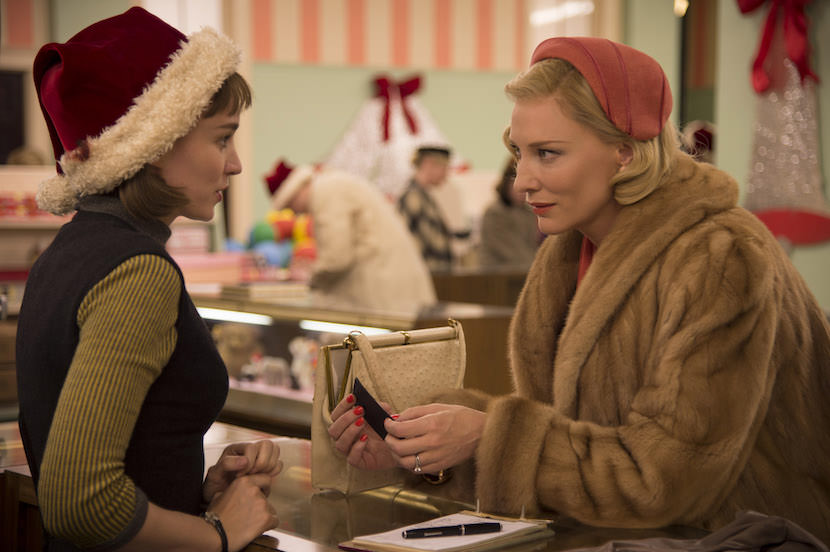
"Cate Blanchett's company, Dirty Films, has a credit because Cate came on giving her name to the project while we were raising the finance. And so we said, “Take an Executive Producer credit because you are showing a commitment to this movie.” HanWay has a credit because they sell the international rights to the film so they were responsible for producing numbers across the whole of the world. The numbers that they produce which are called a sales number, sales estimates you take to a company, in this instance Ingenious and Ingenious do what's called discounts the presales. They act basically as a bank. So they have an Executive Producer credit. Goldcrest film is a post-production house that exists in New York and London. My partner Stephen Woolley was head of Goldcrest, which goes way back to about five years, and they came on board as a postproduction equity financier so they have an Executive Producer credit. And I think that's it really the only other source of finance that came into the movie was a music publishing deal, the soundtrack deal from Cutting Edge but they don't have an Executive Producer credit. Then also there was the tax credit that was available in Cincinnati that was seminal in making the movie and that again was discounted by Ingenious. So there you go, that's how it works in this instance. Often there are all sorts of credits for people who Christine and I will never meet, people who had a very tenuous to say the least involvement in the production. In this instance all of those company credits are people who directly provided finance for the film other than Dirty Films, where it was an in-kind contribution."
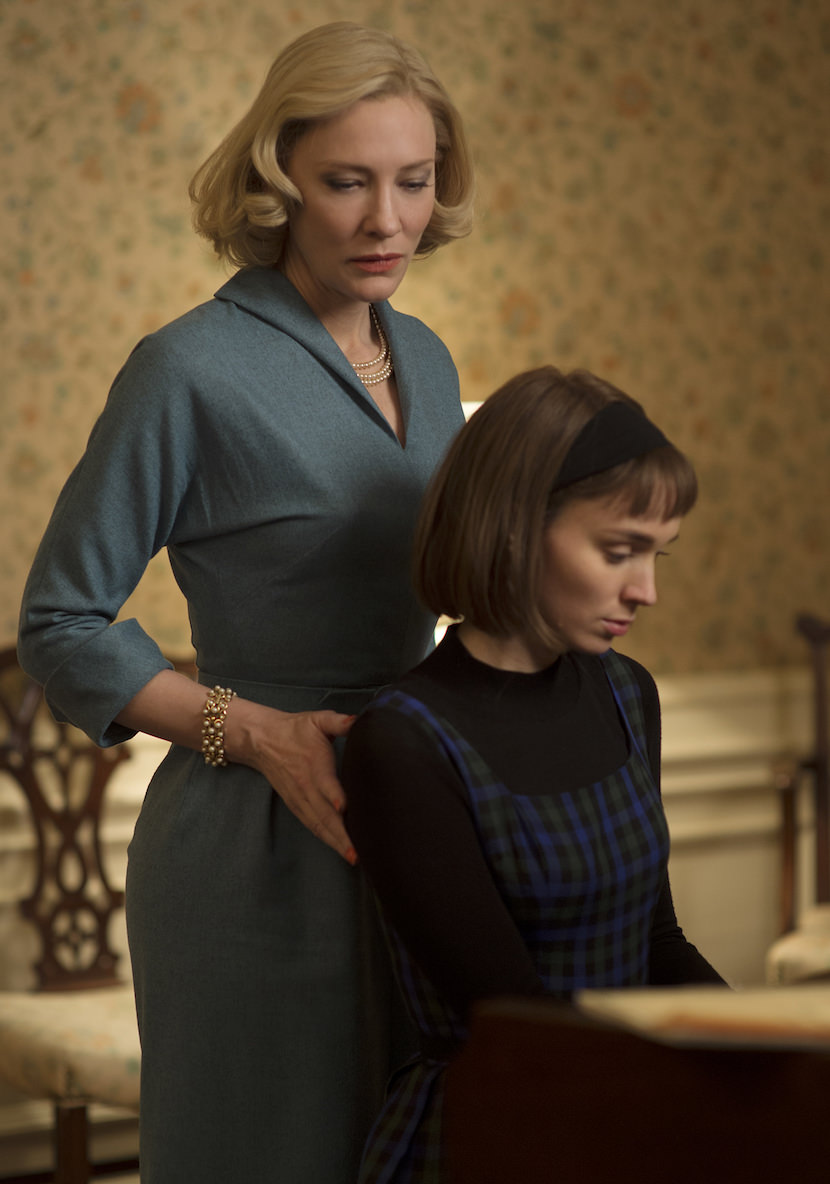
An illicit love expertly portrayed. Courtesy Weinstein Co.
Vachon added, “But there still are a couple of Executive Producers on there who just are credited because of the early history of the project. The thing about producer credits is we're not protected the same way writers and directors are. So if somebody said ‘I'm going to put up half a million for your movie in exchange for a co-directing credit,’ the answer would be like 'that's absurd' but it happens to us all the time.”
Karlsen said that the toughest situation for her when it comes to producer credits is immediate financial or rights pressure. “If you need a legal piece of paper or if you are in the unfortunate position which I think both of us have been in where you already started shooting and then lo and behold in week two or three of your seven-week shoot 30 percent of your financing drops out. You go to someone and they really have you over a barrel and they basically say, ‘I want this credit; I want that credit.’ And it's painful because typically the way that Christine and Pam and Stephen and I work is we really build things from the ground up. And we look after them all the way through and we probably make I would say on average 25 cents a day.” (“On a good day,” Vachon chimed in.)
Karlsen continued: “On a good day if you count over the years how much work and effort it takes and the roller coaster ride of that process. So that's a bad situation to be in. And the other is if you need a piece of paperwork to complete your chain of title, which basically is a chain of documents that can be as long as this table, as they were on ‘Carol.’ Without those documents the financier will not advance cash because they need to see that you do own the rights. So if there's one piece of paper that you need, when you are going to that individual that puts them in a very easy position to say, ‘Sure, I'll give you that piece of paper which you are legally entitled to but by the way I want a credit.’ It is something we can never imagine doing but it certainly happens, and as Christine says and my partner Stephen says, ‘Well, it's a question of do you want to make the film or don't you want to make the film?’”
In the book, the character played by Rooney Mara is a set designer. But in the movie, she is a photographer, which gives her a chance to use her art form to interact with the woman she is attracted to and it gives us a chance to see how her artistic vision matures and deepens. The very striking and evocative images in the character’s photos are an important part of the film’s visual storytelling. The cinematographer, Ed Lachman, recommended a friend who had “this extensive library that Todd just loved,” said Karlsen. But Haynes was also influenced by the women photographers of that era, “who were really finding their voice and their medium those years,” Vachon said, like “Ruth Orkin, Vivian Meier, and Esther Bubley.”
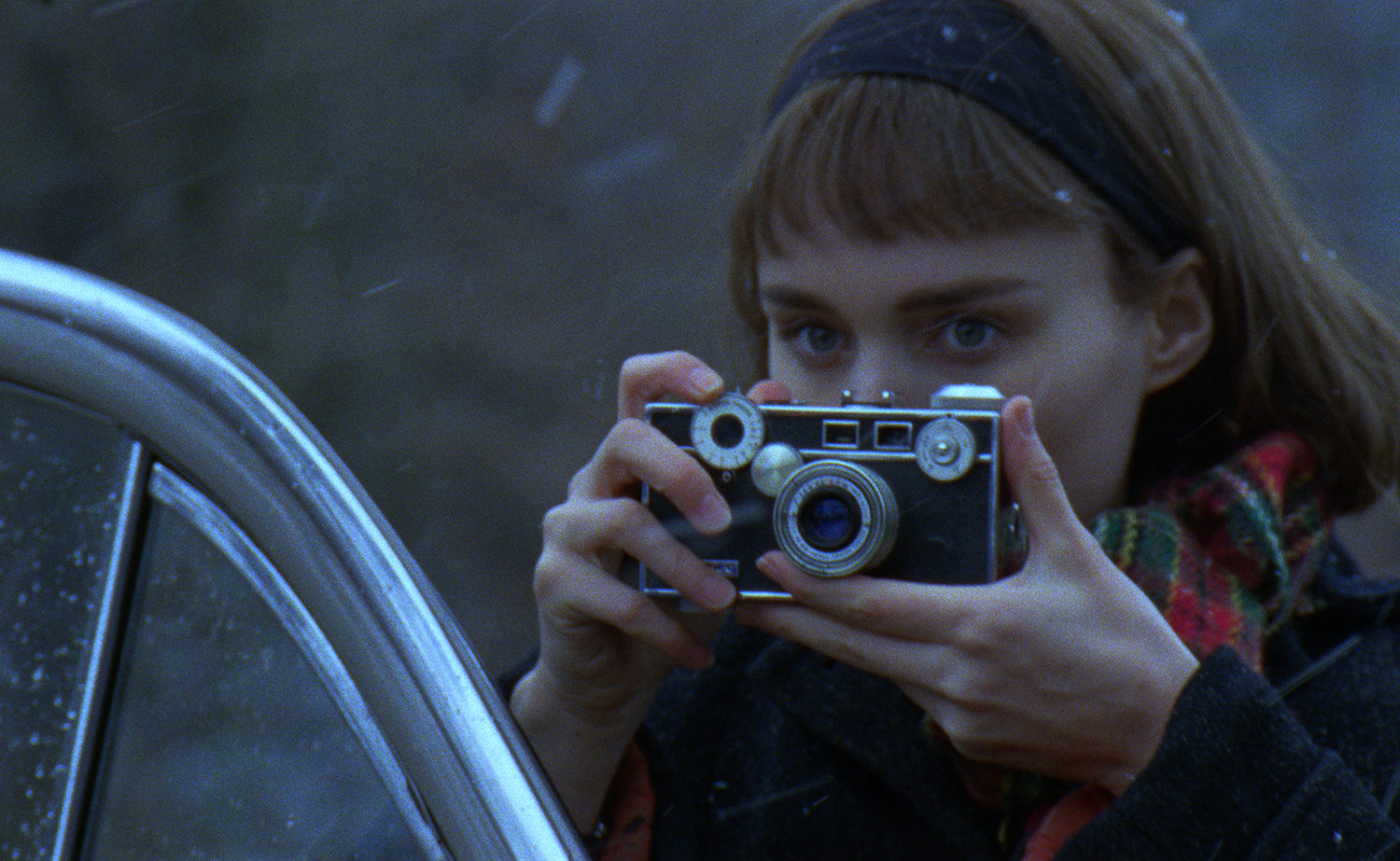
Rooney Mara's character was influenced by real photographers of the era like Ruth Orkin and Vivian Meier. Courtesy Weinstein Co.
The period details in the film are exquisite. Karlsen quoted Haynes as saying that “When you do period you get to adjust every single thing in the frame and that's what wonderful filmmakers want to do. They want to be able to say I have to control the mise en scene completely.”
The costumes in the film were designed by the brilliant Sandy Powell, who described it as “a frock film.” Karlsen said she told Powell, “Who would have known that a black and yellow houndstooth check suit would work with a red top and red shoes? So she's just extraordinary. What I particularly love about her is I think that sometimes when you say period films, the period design is somehow preserved in a space separate from the narrative and the emotion of the film and this completely serves, it both informs and is informed by character and narrative and setting and I think that's what is so genius. So it is not just Carol is wearing an extraordinary dress, it’s Carol wearing a dress because at this moment she feels like this and she may do that. That's what I think makes Todd’s work with Sandy so special — you don't feel that it's period details preserved in aspic somewhere on its own while the story is taking place in another area.”
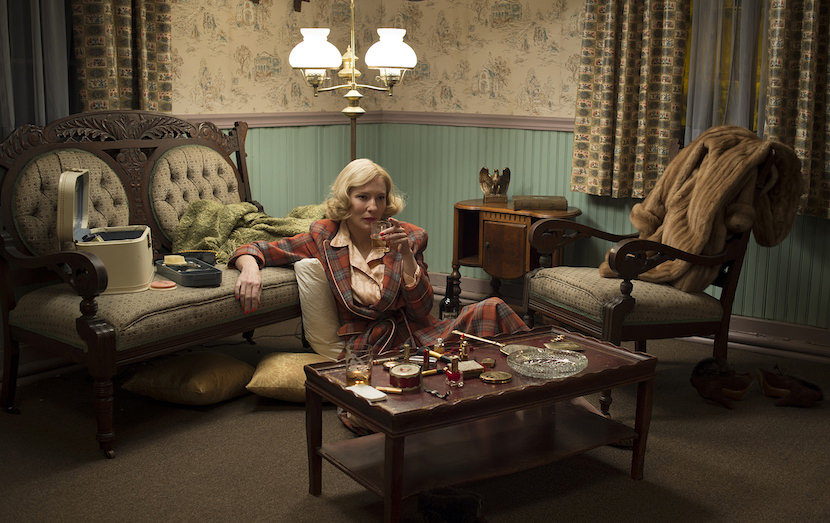
Vachon was especially impressed with Powell’s work on the costumes worn by Rooney Mara, whose character goes from looking like a college girl to looking like a confident woman with a sense of expressing herself through style. “Therese had to really go through a real transformation throughout the movie and I think actually Rooney when she saw some off Therese's clothes she was a little like ‘Cate's wearing that glamorous fur and I'm wearing this hat with a pom-pom?’ but I mean it was absolutely necessary because that's was who she was and by the end of the movie she is depending on who you asked, Jean Seberg or Audrey Hepburn or Jean Simmons. She had to trust Sandy, and she did.”
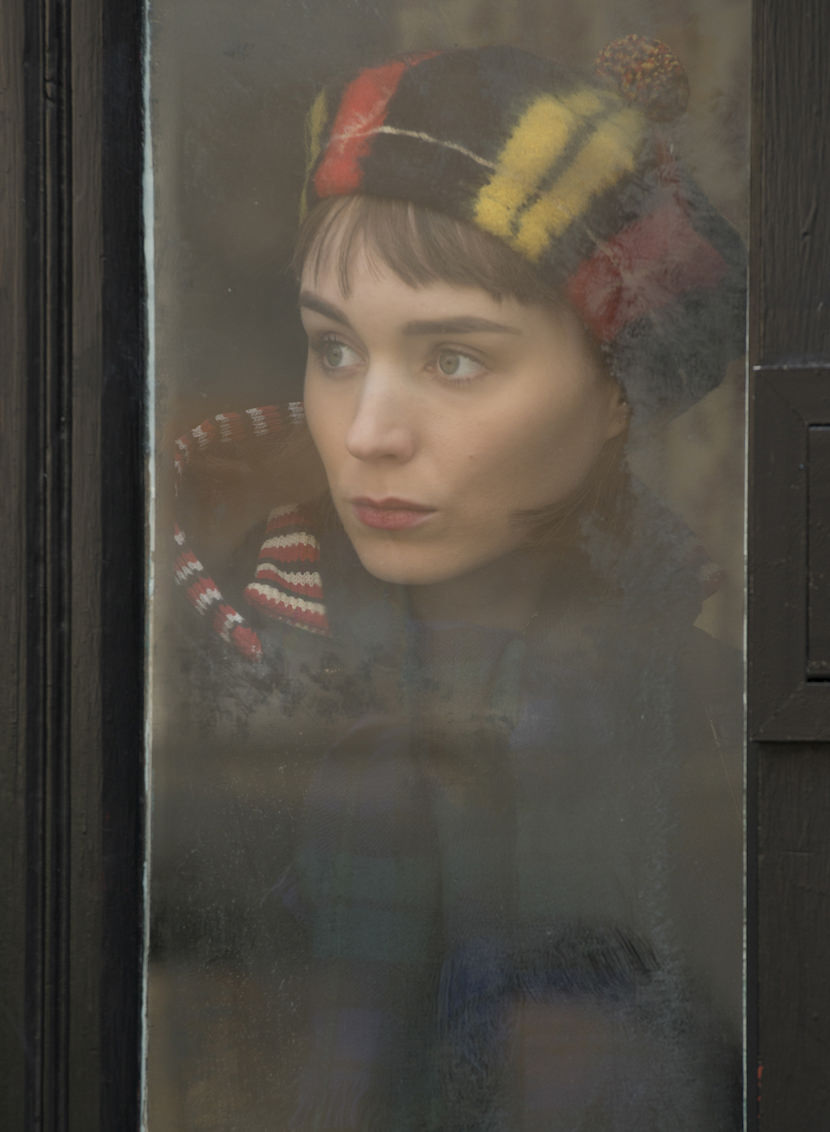
Although it was originally screenwriter Phyllis Nagy’s idea to adapt the book, the producers had to coax her to write the script. It took them seven years to secure the rights (“I was just sort of like an obnoxious terrier making sure I got them,” Karlsen said) and by that time Nagy felt she had come close too many times and did not have the heart to start up again. Karlsen told her the project was going ahead, and “she said it took her a month to call me back, but I think it was the next day.”
Karlsen explained, “It's a really terrific adaptation and she has a kind of precision and a kind of sparseness in that script that really enabled Todd to be at the top of this game as a film maker. Turning Therese into a photographer is so excellent because she knew that you needed to see into Therese's character where she shifts from being someone who looks at objects to someone who looks at people. So by the end she is looking at Carol.”
For producers, bringing a film together is like a game of three-dimensional chess with cats as the chess pieces. The next thing that happened was that the director had to back out due to other commitments. And that meant risking Cate Blanchett, because “an actor like that is director-dependent. So we went from having something to having absolutely nothing.” Karlsen, working in London, called Vachon in New York, who said that the movie she was working on with Haynes had just fallen apart when an actor dropped out. “And then there was what I call the middle of the Atlantic light bulb moment,” said Karlsen. They both knew Haynes would be ideal for this story. Karlsen explained, “He said the reason he is so interested in women particular at that time is there were so many social mores, there was a kind of incarceration really, many restrictions imposed on how you can function in your life and it creates space for drama and complexity and that's what he explores so, so brilliantly. On Far From Heaven, he said ultimately the Dennis Quaid character as a gay white man was still able to transgress his circumstance so much more than Kathy as a white woman or Raymond as a black man could ever possibly do. That film and his ‘Mildred Pierce’ are all about women of their times who have to deal with limits imposed by society.”
Vachon said that in part because so many different kinds of contributions to a film are labeled as “producers,” the role that she and Karlsen play is not often recognized. “It is a very unsung profession. We don't have a lot of support. We slog through even though we know we're not going to be the ones getting the credit. Sometimes we'll find our names left off the catalog or we will not be invited to the filmmaker events at festivals. So we have thick skin or we wouldn't still be here. My job is to honor the vision. And we support each other and stay in touch and listen to each other, so when Liz told me, ‘I've lost my director,’ then we were really in a really great place to make that pivot. That comes from building those relationships.”


